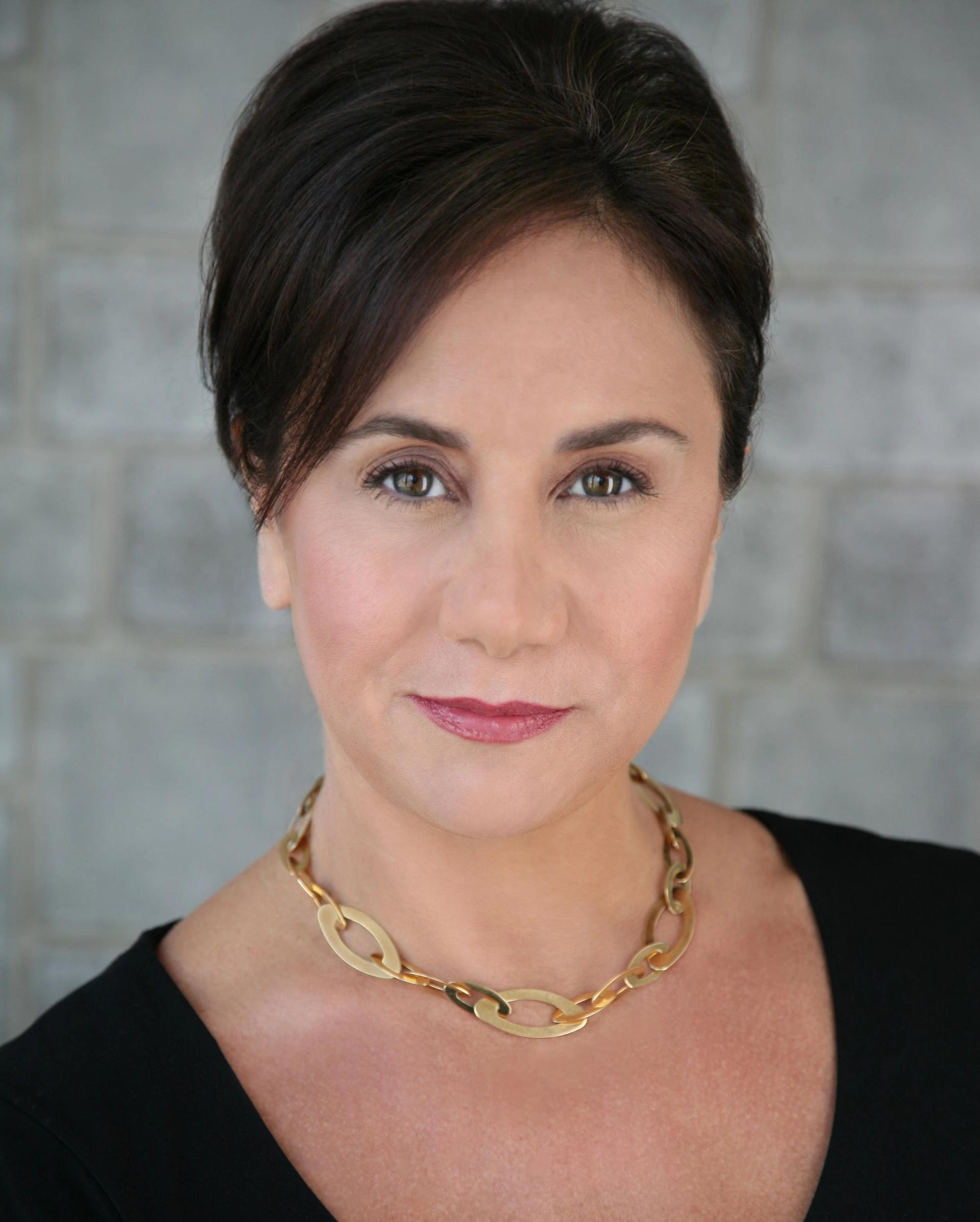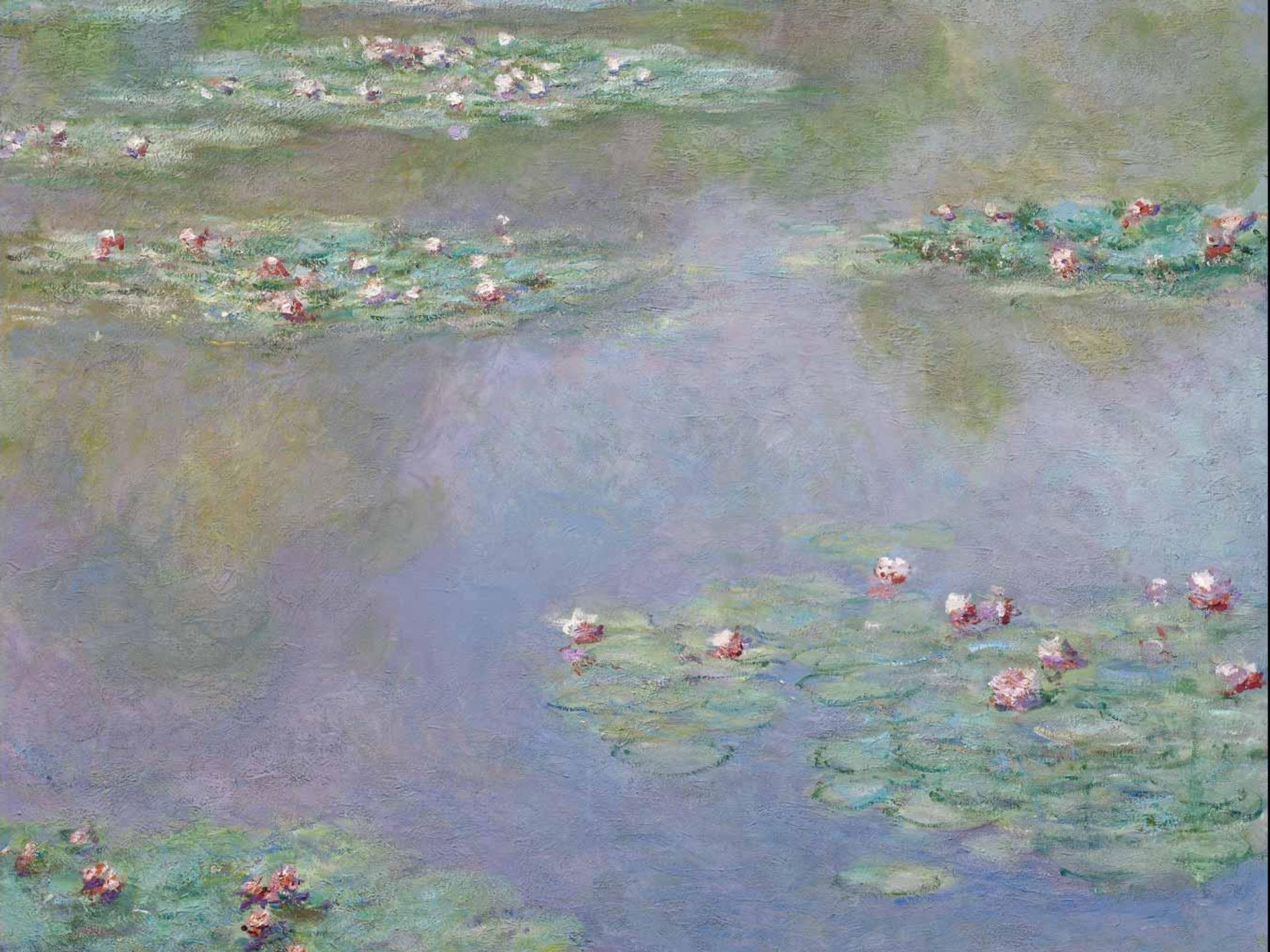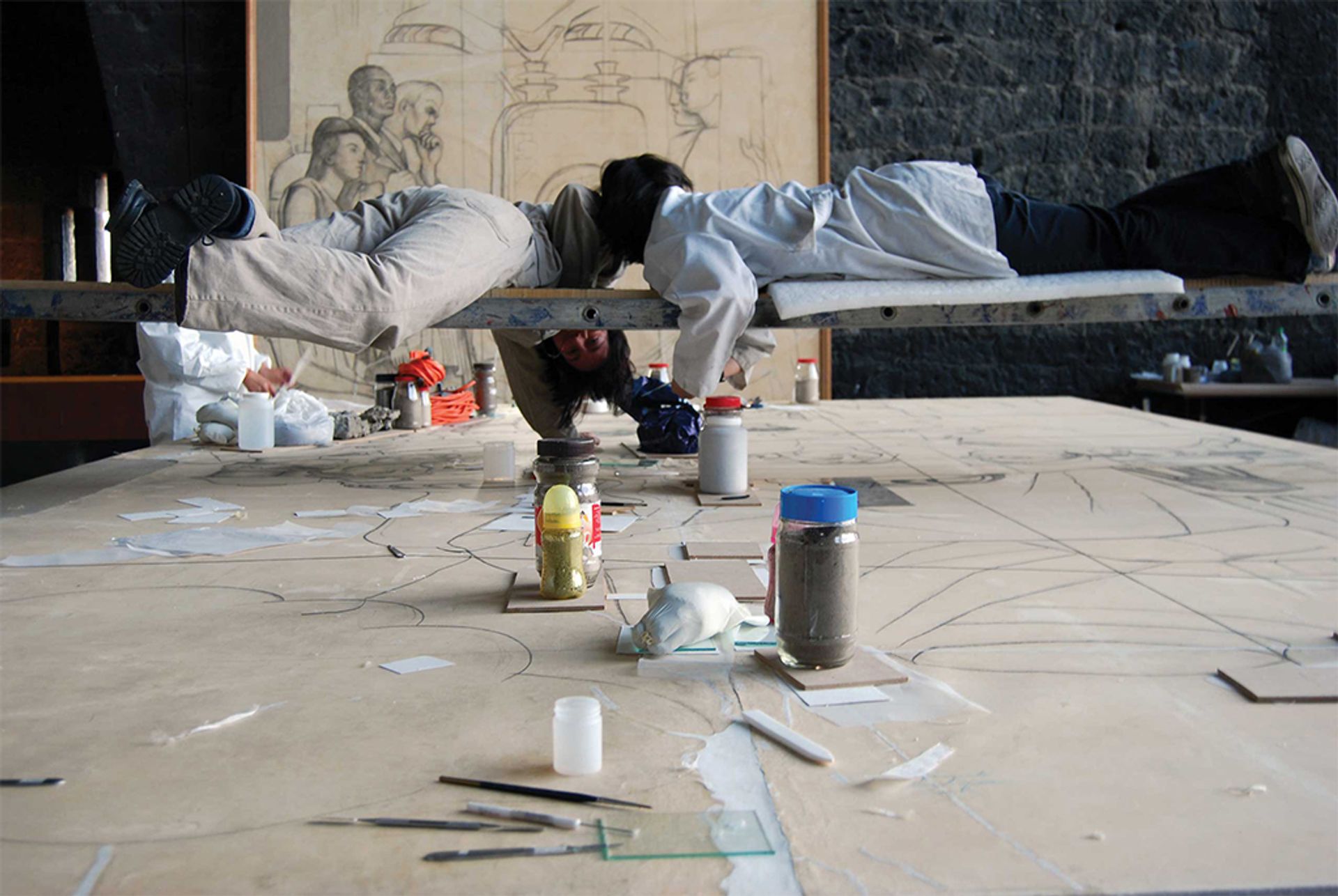As part of a special report on sponsorship we published in 1994, The Art Newspaper’s founding editor Anna Somers Cocks interviewed James Joll of the international media giant Pearson plc, then one of the UK’s biggest exhibition sponsors. To find out how the mechanics of corporate sponsorship might have changed since then, this month we spoke with Rena De Sisto, the global arts and culture executive for Bank of America, one of the biggest sponsors of shows in the US. She oversees all of the company’s programmes, from its many international exhibition and museum partnerships, to Museums on Us, which provides its customers with free admission to 225 institutions across the country on the first weekend of every month, as well as its annual Art Conservation Project grants. De Sisto is also a managing director of the Metropolitan Opera, a member of the British Museum Chairman’s Advisory Group, and a board member of the Fondazione Palazzo Strozzi in Florence.

Rena De Sisto, global arts and culture executive for Bank of America
The Art Newspaper: How far back does Bank of America’s relationship with the arts and culture go?
Rena De Sisto: I would say 1997, which is when we started Museums on Us. That was a FleetBoston programme that only ran for the month of May, which was national museum month. When Fleet merged with Bank of America, we had a programme that was very popular, and what you don't want to do is take away popular programmes when you're acquiring a bank, so we came up with a new approach, which was to spread it nationally and offered it the first weekend of every month.
And do you know what the first major exhibition was that Bank of America or Fleet supported?
I do, because it kicked off this element of my career. In 1998, Fleet sponsored a show called Monet in the 20th Century, at the Museum of Fine Arts Boston. That was the first show I ever worked on, while in communications and media relations actually.

Claude Monet, Water Lilies (1907) was a centrepiece of the Museum of Fine Arts Boston's blockbuster 1998 exhibition Monet in the 20th Century, sponsored by Bank of America Bequest of Alexander Cochrane. Courtesy of the MFA Boston
The CEO of Fleet at the time, who was on the board of the Museum of Fine Arts, came back to the office and said: "They're doing a show on Monet and I’d like us to sponsor it." And so it ended up with me and it was the first time I ever managed a major exhibition. It was tremendously successful and ended up being the most highly attended show in the world that year with more than 565,000 attendees. [Ed note: The show travelled to the Royal Academy in London in 1999 and was the most popular show that year as well, with more than 700,000 visitors, according to The Art Newspaper’s annual attendance figures survey.] In terms of the sponsorships that I've worked on, that was one of the highest attended shows of my early career. That said, we sponsored the Louvre’s Leonardo da Vinci exhibition this past Fall and saw an attendance of 1.1 million visitors, which is quite incredible.
What was it like working on a blockbuster show like that?
Managing it was a learning experience for me. The Museum of Fine Arts staff were fabulous in terms of being very collaborative, as we thought through different things to do. For instance, one of the things we did was an employee sweepstakes to go to Giverny. We also had a senior leaders meeting with 200 people or so that included a dinner and we opted to use recipes from Monet's table cookbook. You can get very, very creative. And obviously free admission for our customers and employees.
We also knew that Monet’s eyesight was failing, so his work from that time was ultra-Impressionistic, so we brought in tours of people who had impaired vision from the Perkins school for the Blind.
When you start really digging into it, there are so many things you can do. The MFA Boston was ahead of their time I think, in some ways, in terms of wanting to be creative with us, and realising that it actually benefits the museum when you have a partner who really wants to go beyond just writing the check and putting their name on something.
What struck me as funny when I read [The Art Newspaper’s interview with James Joll] was that he was talking about how they provided advice to the museum about what should be part of the show. And that is just a no-no now. We are very focused on enabling and not meddling. The public doesn't want us to curate shows, we're not curators. We help museums do what they do best.
Why does Bank of America sponsor the arts in so many ways?
It flows from the focus that we have on the communities that we serve, our employees, and our customers. Museums are very important economic players in the communities that they serve. So we're able to hit all of those notes in an impactful way when we partner with an arts institution, whether we're inviting our clients in for a special event, or we are helping the museum function and have revenue and organise shows that create excitement and traffic for them. And then of course our employees have the pride of knowing that their company is a significant force in their community.
And I am admittedly biased as the arts and culture executive for this company, but I believe that art is important, powerful, and meaningful. It's a wonderful way to give back to your community. Everybody wins.
With museums really hurting, having been closed for months, is there going to be more of a need for sponsorship?
Yes, even when they reopen, they are dealing with a whole new dynamic in terms of visitor behaviour, lack of tourism—this pain is going to go on for a while. I'm talking to museums to understand what they need, because we want to be there with them as we go through this difficult period of time. So for instance, with Museums on Us, we halted that for a couple of months while that museums were closed. But as they're reopening, they all are going to have different protocols for getting in—make a reservation, go online and pay. When you get into the museum, you might have to wait in line to get into a gallery, for social distancing purposes. So we're actually working with all of our 227 museums right now to understand exactly what their protocols are going to be, so that we can let our customers know as they start coming back to use Museums on Us.
I'm also talking to the museums about the way forward for them, and how can we be with them. Because they are not going to have major crowds for a very long time, which frankly, in some cases may create a better viewer experience. However, that has a major impact on their earned revenue. And so our support is more important than ever, and how we support them is evolving. As an example, many museums offer digital activity. Up til now it's mostly been marketing or informational, but it's not monetised for them. They derive no revenue from that. How can we help them change that?
So would Bank of America sponsor a digital initiative for a museum rather than an exhibition itself? Or that would be part of the sponsorship?
Yes, exactly. Some element of it. Many of them are telling me that they expect to do less major exhibitions. As you can imagine, they're very expensive. And so with fewer visitors offsetting the cost of them, that makes it a little bit less appealing. If they do special exhibitions that are expensive, they'll keep them up for a longer period of time. Some of them will be relying more on their own collections and taking things out and showing them in new ways. So our sponsorship programme may look a little bit different, but we will be there with them in some way, shape or form.

Conservators at work on Diego Rivera's mural sketches for El hombre en el cruce de los caminos (Man at the Crossroads) © 2016 Banco de Mexico Diego Rivera Frida Kahlo Museums Trust, Mexico, D.F. I Artists Rights Society (ARS), New York
Tell me about the Bank of America Art Conservation Project and how you make those decisions.
In terms of the conservation programme, it's an open process where we take an application. There are fixed criteria—it has to be important to the collection of that particular institution, it certainly has to go back on display, and it has to be important to the history of art and culture. Sometimes these things are designated national treasures. All of that is to make sure that we are supporting and funding pieces that are going to be treasured and they're going to be seen. We like to have a balance every year from different countries, different cultural traditions, and different types of media. Really, it is first and foremost helpful to the museum, because they are always in need of funding and sometimes conservation falls to the bottom of the list. But once they are able to restore something, they're able to put it on display, they're able to lend it. It's actually able to be seen again more than just at that location. But a big part of why we do this is because of the pride that it instills in our employees.
The conservation programme was started around 2010, right after [investment firm] Merrill Lynch became part of Bank of America and turned it into a truly international company. Bank of America had some customers and operations overseas, but Merrill really intensified that for us. We were doing business in all of these different countries, and we had employees in all of them suddenly. So what could we do to show respect for the cultures of the places where we were now doing business, and the employees who now work for the company? That was the impetus behind it.
What about the exhibitions you sponsor?
It's an art, it's not a science, but we try to be very balanced in terms of the cultural traditions that we are enabling people to see and enabling museums to put on. So you will see a Jasper Johns show at the Whitney and the Philadelphia Museum of Art, now planning to open in 2021, that we're sponsoring, but we're also sponsoring a show on Diego Rivera at the San Francisco Museum of Modern Art, that opens up around Thanksgiving. So different cultural traditions, different time periods, but all with an eye towards making sure that we don't go for the terribly obscure. We go for the things that we feel are going to create excitement and people are going to want to see. And that's the other ingredient.
Do you like talk to museums early on in their planning to find out what their forward calendar looks like?
Sometimes they contact us, sometimes we contact them. We have colleagues who are very much embedded in the communities that these museums are in. It's a back and forth. There's a bit of consultation to understand what their offerings are at any particular time, what there is to pick from. We want to look at the landscape, what you're doing over the next two or three years.
Do you have an overall annual budget for your sponsorship and can you tell us how much is spent?
I do have an overall annual budget and while I can move the money around a little bit, we do fund everything with the one budget.
If you look at the funding for the company as a whole, a combination of funding from the foundation and funding from sponsorships, we are upwards of $25 million every year and have been for probably 10 years—and sometimes significantly upwards of that.
And is there anything you expect in return from the museums for your sponsorship, or is it more open ended? Is part of the deal access for customers, access for staff, what is the give and take?
It's a partnership. We're looking for all of those things that make it worthwhile for our customers and for our employees, and the museums understand that. Since I've been doing this, museums have actually gotten much more creative about how they work with sponsors as well. So it's very much a two way street, and just a little bit of a science, in terms of free access for customers, opportunities to have client events, and sometimes we even fund free days for the entire community. It's different in terms of our educational programmes that we fund that are associated with the programme, but it's always evolving, I would say it's an organic process.
And what do you think sponsorship is going to look like in the next five to 10 years?
I think that museums are going to continue to struggle with earned revenue for some time, so a very diverse set of funding streams is going to become even more important to them.
We've made good on all of the commitments that we've made, even if the programming was converted to digital or just straight out cancelled [because of the pandemic], we've funded everything that we intended to fund from the start of the year. And in some cases we have given museums additional funding to create offerings digitally.
We remained steadfast in supporting the arts through the financial crisis [of 2008], and we will remain steadfast going forward through this health and humanitarian crisis. I think our partnerships are going to be more important than ever. And I suspect if you spoke to any museum director, they would tell you the same thing.
• For more on how arts and culture have been funded over the past three decades, browse our archive collection "Funding Matters"

